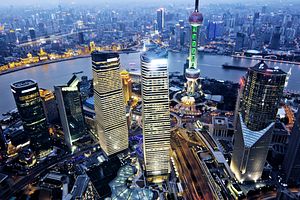The latest quarterly economic figures for China have been released this week, and while the numbers are below the government’s official target of 7.5 percent growth, for the most part these indicators probably fall within the government’s new expanded comfort zone for economic volatility. Leaving aside the accuracy of China’s official economic statistics, the annualized third quarter GDP figure of 7.3 percent is still the lowest quarterly growth in five years, leaving some experts on China’s economy to wonder if the inherent problems in over investing in infrastructure and real estate may finally be coming back to haunt Beijing.
With first quarter growth at 7.4 percent and the second quarter coming in at 7.5, the third quarter figures will make the government’s yearly growth target of 7.5 percent less likely. President Xi Jinping has indicated he can accept some economic volatility as the country transitions from a production and investment-based economy to one driven by consumer spending. Additionally, the third quarter performance beat the 7.2 percent figure predicted by a Reuters poll of economists.
Capital Economics specialist Julian Evans-Pritchard also noted that employment and service sector growth remain strong in light of this recent drop in growth. However, once infrastructure spending in the second quarter “fizzled out, the downward pressure has returned,” he said. Moody’s Analytics chief economist Mark Zandi further noted that “with policymakers now prioritizing employment and economic rebalancing over growth, we don’t think they will feel the need to act aggressively to shore up the economy in response to today’s data.”
While the GDP data may not be low enough to cause China’s leadership to show public concern, other data released painted a darker picture. Housing sales for the first three quarters of this year have fallen 10 percent, while property development growth in general dropped 12.5 percent for the same period. Manufacturers as well as certain commodities have also taken a hit, with industrial production declining by 0.3 percent from the previous six months. Steel in particular has taken a large hit due to the recent course change of China’s economy. The Nikkei reported on Wednesday that the price of reinforced steel has dropped around 20 percent since the beginning of the year to 1.5 yuan ($0.24) per 500 grams, or “roughly the price of Chinese cabbages.” According to a steel wholesaler in Sichuan province, “Chinese cabbages are doing better because they sell… We may have to shut down the business.”
Analysts that spoke with Reuters expect China to announce new economic stimulus in light of the lackluster quarterly growth, however, its report stated that “Most economists do not expect more aggressive policy action such as interest rate cuts unless conditions sharply deteriorate,” especially as Premier Li Keqiang has said on several occasions that as long as employment is firm, China can withstand slower growth. And indeed, Beijing has shown a greater tolerance for risk this year, allowing for the first time private companies like Zhejiang Xingrun Properties and Shanghai Chaori Solar Energy to default on 3.5 billion yuan in debt and a 4 million yuan bond coupon payment, respectively.
However, with the exception of the rebounding U.S. economy, there are few places to look in the region to help revive China’s growth. Japan, the world’s third largest economy and one of China’s largest trading partners, is also experiencing stronger economic headwinds. Tokyo’s growth has been significantly curtailed since the April consumption tax increase. On Tuesday the government’s economic assessment was downgraded for the second consecutive month. The Cabinet Office is attempting to ameliorate its announcement with statements that private consumption “appears to be pausing recently,” or that “consumer prices are rising at a lower tempo,” while also apparently exhorting the Bank of Japan to intercede in order to achieve the two percent growth target “at the earliest possible time.”
South Korea is not faring much better, with its central bank cutting the economic forecast for this year and 2015, while its “outlook still stresses negative over positive factors.” After cutting interest rates in August and October due to poor consumer sentiment, Bank of Korea Governor Lee Ju-yeol said “Even if we do post 3.5 per cent growth this year, this would be lower than our potential growth rate and we felt there was a need to pull forward the timing of our recovery.”
While China can likely manage its economic slowdown in its current form, it cannot afford sudden shifts. Attempts to redirect growth toward consumerism will be difficult to manage in the short-term, meaning Beijing will have to rely on its weakening fundamentals for the time being.

































